Both moves are catastrophic.
Not so much for China, but rather for the United States. China CAN weather out the changes. The United States hasn’t a chance in Hell.
The mere idea that these concepts are actually being considered should illustrate just how crazy, desperate, and ruthless the United States has become.
Take note that the thrashing of the dying United States is getting worse and worse. Soon, some kind-soul is going to need to put it out of its misery.
We begin here…
Newton Stone
There are plenty of standing stones all around Europe. The most famous of these is undoubtedly England’s Stonehenge, but other countries boast ancient monuments and mysterious artifacts too. In Scotland, the most bizarre and confusing of these is the Newton Stone.
Standing in Aberdeenshire, the Newton Stone was carefully carved into a serpent-like pattern. Along with whatever snake-type creature is shown, the stone appears to boast some flowers and some circles. Unfortunately, the meaning of those images isn’t known by archaeologists. However, the other side of the Newton Stone is where things get really crazy.
On the back, there are six lines of indecipherable text. There is a series of dash-like lines and carvings that historians are pretty sure date back to an ancient language called Ogham. However, there are a few other lines written in some other mysterious text. Linguists have no clue what the second language is or what the message is supposed to represent.
Some scholars believe it is a very rough, ancient version of Latin left over from when the Romans occupied the area. Others claim it’s a bastardized form of Ancient Greek, while another group of linguists wonders if there’s a Slavic background to the bizarre text. Still, other experts contend the text is Pictish—an ancient language spoken by peoples who lived ages ago in Scotland and northern England.
That last theory might make the most sense, but it hasn’t given modern researchers any conclusive answers. To this day, the Newton Stone’s purpose is not clear. And the message scrawled on its backside is even more of a mystery. Is it a religious shrine? Could it be a message having to do with weather patterns or other natural phenomena? Was the scribbled inscription a warning of a terrible future ahead? We simply don’t know, but the mystery of the site makes it a little creepy—and a lot of fun.
Achiote Butter-Basted Turkey
with Ancho Chile Gravy

Ingredients
- 2 fresh poblano chiles
- 3 dried ancho chiles, stemmed, halved and seeded
- 1 (22 to 24 pound) turkey, giblets discarded
- 1 large white onion, quartered
- 3/4 cup (1 1/2 sticks) butter, room temperature
- 3 tablespoons achiote paste
- 4 cups chicken stock
- 1/4 cup Masa Harina
- Salt and pepper to taste
Instructions
- Char the poblano chiles over a gas flame or in a broiler until blackened on all sides. Enclose chiles in a paper or plastic bag. Let stand 10 minutes to steam. Peel and seed chiles.
- Toast ancho chiles in a heavy, large skillet over high heat until the color darkens slightly and the chiles are fragrant, about 30 seconds per side. Transfer the ancho chiles to a medium-size bowl. Add enough hot water to the bowl to cover the chiles. Let stand until the chilies soften, about 20 minutes.
- Puree four ancho chile halves with 1/2 cup soaking liquid in a blender. Add the roasted poblano chiles; puree. Season with salt and pepper. Drain the remaining two chile halves; chill. (Puree and soaked chiles can be made one day ahead. Cover separately and chill.)
- Heat oven to 350 degrees F.
- Rinse the turkey inside and out, and pat dry. Sprinkle the turkey with salt and pepper. Cut the remaining two ancho chile halves into strips. Place the chile strips and onion in the turkey cavity.
- Mix the butter and achiote paste in a small bowl to blend. Run your fingers between the turkey breast skin and meat to loosen. Rub half of the achiote butter over turkey breast under skin. Rub butter over the outside of turkey. Place turkey in a large roasting pan. Tuck wings under the turkey. Tie legs together to hold shape. Pour 1 1/2 cups of stock into the pan.
- Roast the turkey 45 minutes. Tent the turkey loosely with foil. Continue roasting until a meat thermometer inserted into the thickest part of the thigh registers 180 degrees F, basting every 30 minutes with pan juices, about 3 1/2 hours. Transfer the turkey to platter. Tent with foil.
- Pour the turkey pan juices into a measuring cup. Spoon off the fat from the pan juices, reserving 1/4 cup of fat. Add enough remaining stock to the pan juices to measure 3 cups. Return 1/4 cup fat to the roasting pan. Place the pan over two burners set at medium heat. Add the Masa Harina; whisk until the mixture resembles a paste, scraping up any browned bits, about 2 minutes.
- Gradually whisk in the pan juices. Add chile puree; simmer 4 minutes to blend the flavors.
- Season gravy with salt and pepper. Serve turkey with gravy.
Yield: 14 servings
WAR IS HERE, the U.S. is in real trouble!
https://youtu.be/5Y23vc43z0U
There seems to be more cultural energy present in the U.S. today, than there is in Europe, which has long since severed from living myth.
The message sent by the Chinese Defence Minister’s three-day visit to Russia is clear. His reception – a high-profile event – was intentionally invested with high visibility. And at its symbolic centre was a meeting with President Putin on (Orthodox) Easter Day which was consequential, both for being far beyond the norms of protocol, and for occurring on Easter Day, when Putin would not customarily work.
Its key message may be surmised from remarks earlier framed by Hu Xijin, the former editor-in-chief of China’s Global Times: “The U.S. repeatedly claims that China is preparing to provide “lethal military aid” to Russia in the ongoing Ukraine conflict”. But that war has “has been going on for more than a year: And according to the West’s previous calculation, Russia should have already collapsed by now … And, whilst NATO is supposed to be much stronger than Russia, the situation on the ground doesn’t appear as such – which is why it causes [such] anxiety in the West …”.
Hu Xijin continues:
“If Russia alone is already so difficult to deal with, what if China really starts to provide military aid to Russia, using its massive industrial capabilities for the Russian military? [If] Russia alone … is more than a match for the Collective West. If they [the West] really forces China and Russia to join hands militarily – the question that haunts them is that the West will no longer be able to do as it pleases. Russia and China together, would have the power to check the U.S.”.
This essentially was what the Defence Minister’s visit was all about: Events have moved on since Hu wrote that piece in the Global Times a few weeks ago and, if anything, recent developments have lent added dimension to his clarion warning that a Sino-Russian joining of hands – militarily – would mark a paradigm change.
The recent event of the U.S. Intelligence leaks (as well as earlier reports from Seymour Hersh) seem to point to deep internal schism in the U.S. ‘Permanent State’:
One element is convinced that the Ukrainian Spring Offensive is a disaster in the making – with major consequences for U.S. prestige. The Neo-con contingent, on the other hand, bitterly refutes this analysis, and instead demands escalation via immediate preparation (arming Taiwan) against a U.S. war to be waged against both China and Russia soon. The neo-cons claim a Russian panic and collapse could happen within 24 hours of an Ukrainian attack.
To put it plainly, the sudden ignition of neo-con war fever against China has just done what Hu earlier foresaw: It has forced Russia and China to join hands militarily, not necessarily in Ukraine, but rather to plan and prepare for war with the West.
In the wake of the Intelligence leaks, the focus on Ukraine in the U.S. has waned, and been replaced in the U.S. with a rising fever for war with China.
The Chinese Defence Minister’s extended Moscow visit was the tangible evidence that now, China and Russia are convinced that the prospect of war is real, and they are preparing for it. Putin underlined the ‘jointery’ by, inter alia, prioritising the strengthening of the Russian Pacific fleet, and upgrading generally Russian Naval capacities.
This is just crazy: Hu was ‘spot on’. If NATO does not have the military industrial capacity to defeat Russia on its own, how can the U.S. and Europe expect to prevail against China and Russia combined? The notion seems delusional.
Historian Paul Veyne, a towering figure in the history of the ancient Roman world, once posed the question: Did the Greeks Believe in Their Myths? All societies, he wrote, contrive to some notional distinction between ‘truth’ and ‘falsity’, but in the end, according to him, this too, is just another ‘fishbowl’, the one we happen to inhabit, and it is in no way superior, as a matter of epistemology, to the fishbowl in which ancient Greeks lived and made sense of their world, in no small part through myths and stories about the gods.
In respect to the myth of the Roman Empire which nourishes U.S. foreign policy, Veyne’s position is profoundly contrarian. For his basic claim is that Roman imperialism had little to do with statecraft, nor economic predation or the assertion of control and the demand of obedience, but rather that was motivated by a collective wish to create a world in which Romans might be left alone, not simply secure, but undisturbed. That is all.
Paradoxically, this account would place the American traditionalist ‘Right’ – which leans to a Burkean-Buchanan perspective –closer to that of Veyne’s Roman ‘reality’ that to that of the neo-cons: i.e. what most Americans wish is for America to be left alone, and to be secure.
Yes, the gods and myths were tangible to the Ancients. They lived through them. The point here is Veyne’s warning against our ‘lazy treating’ of ancient Romans as versions of ourselves, caught up in different contexts, to be sure, but essentially interchangeable with us.
Did the Greeks believe in their Myths? Veyne’s short answer is ‘no’. The public spectacle of authority was an end in itself. It was artifice without an audience – as an expression of authority beyond question. There was no ‘public sphere’, indeed no ‘public’ as such. The state was instrumentalist. Its role was to mediate and keep the Empire aligned and attuned with these invisible and powerful forces.
The gods and myths were understood by the Ancients in a way that is almost wholly alien to us today: They were energetic invisible forces that carried distinct qualities that both shaped the world and carried meaning. Today, we have lost the ability to read the world symbolically – symbols have become rigid ‘things’.
The implication of Veyne’s analysis is that Rome is false as a comparison to support the ‘myth’ of the inevitability of U.S. primacy: The ‘mythical’ neo-con approach of course is instrumentalised to convince us all that U.S. primacy is ordained (by the gods?), and that Russia is low hanging fruit – a fragile rotten structure that easily can be toppled.
Do then the neo-cons believe their own myths? Well, ‘yes’ and ‘no’. ‘Yes’, in that the neo-cons are a group of people who come to share a common view (i.e. Russia as fragile and fissiparous), often proposed by a few ideologues deemed to be credentiallised. It is a view however, not based in reality. These adherents may be convinced intellectually that their view is right, but their belief cannot be tested in a way which could confirm it beyond doubt. It is simply based on a picture of the world as they imagine it to be, or more to the point, as they would like it to be.
Yes, the neo-cons believe their myths because they seem to work. Just look around. As the means of communication have become decentralized, digitized and algorithmic, contemporary culture has forced individuals into herds. There is no standing apart from this discourse; there is no thinking outside of the Tik-Toc feed; it gives rise to the formation of a pseudo-reality, severed from the World, and generated for wider ideological ends.
Put plainly, there never was a ‘public sphere’ in Rome in the modern sense, and in today’s sense, no alive western ‘Public Sphere’ either. It has been anaesthetised via the social media platforms. The public spectacle of neo-con credentiallised ideological authority (say, a Lindsay Graham advocating for war on China) becomes an end in itself. An expression of authority beyond question.
The neo-con myth of Russia on the cusp of implosion makes no sense. But it is a picture of the world as the neo-cons imagine it to be, or more to the point, would like it to be. The shortcomings of the Ukrainian forces as detailed in (their own American) Intel leaks: They pretend not to notice – convinced, as Foreign Policy explains, that once the expected Ukrainian offensive launches, if “the Russian soldiers panic, causing paralysis among the Russian leadership … then the counter-offensive will be successful”.
The more such delusional analysis is pursued, the more functional psychopathy will be exhibited, and the less normal it becomes. In short, it descends into collective delusion – if it hasn’t already.
The U.S. may have entered a fever for war (for now! (Let us see how it lasts as events in Ukraine play out)), but what of Europe? Why would Europe seek war with China?
Thomas Fazi writes that:
“Emmanuel Macron’s call for Europe to reduce its dependency on the United States and develop its own “strategic autonomy” caused a transatlantic tantrum. The Atlanticist establishment, in the U.S. as much as in Europe, responded in a typically unrestrained fashion — and, in doing so, missed something crucial:
“Macron’s words revealed less about the state of Euro-American relations than they did about intra-European relations.
“Very simply, the “Europe” Macron speaks of no longer exists, if it ever did. On paper, almost the entire continent is united under one supranational flag — that of the European Union. But that is more fractured than ever. On top of the economic and cultural divides that have always plagued the bloc, the war in Ukraine has caused a massive fault line to re-emerge along the borders of the Iron Curtain. The East-West divide is back with a vengeance”.
“The end of the Cold War and, then, the CEE countries’ accession to the EU just over a decade later were both heralded as the post-Communist countries’ much-awaited “return to Europe”. It was widely believed that the EU’s universalist project would smooth out any major social and cultural differences between Western and Central-Eastern Europe …Such a hubristic (and arguably imperialistic) project was bound to fail; indeed, tensions and contradictions quickly became apparent between the two Europes”.
Belief in an integral European culture has been more a mark of a central European sensibility than of the western edge of Europe. It was not only Russia that was at issue for the East. They resented being cut off from a world of which they had been an essential part. Yet when communism receded, the European culture – as imagined by the dissidents – vanished in a Europe beset by division and a culture war imposed from the centre that purposefully has attempted to strangle any attempt to revive national cultures. For Milan Kundera and other writers like him, there is no living culture in Europe, and its posterity inhabits a void created by the disappearance of any supreme values.
Paradoxically, the war in Ukraine has strengthened Russian national culture, but has exposed the façade in the EU. There seems to be more cultural energy present in the U.S. today, than there is in Europe, which has long since severed from living myth.
Meanwhile in Japan

A Sobering Confession
I am a 72 year old female who just found out I have stomach cancer.
My whole life I worked as a neurosurgeon and spent my youth and up until my early forties, going through school and trying to become the very best medical doctor.
I never had kids, was way to busy to marry, and only even had any definition by my career title.
My life was based on my career and focusing on helping others. It wasn’t until my 70s did I realize that all of my family is dead and I never had friends. I had collegues and coworkers, but never any friends. Even as a child, I was always the “lone” wolf.
I retired 5 years ago and loved my party. It was awesome having people say goodbye and feeling included. But after that, no one checked up on me or even said anything to me after that day.
My family like mother, father, siblings, died many years ago. It’s now just me.
I realized I worked myself to death and never had a life. Never went on any trips, never met a wonderful man and had children. It was always just me and my patients.
Now that I am dying, I really have nothing left. Most people wouldn’t want an older friend or romantic partner, and if they do, I now have to worry about them wanting me for my money as I am a multimillionaire.
To the people reading: Meet people. Most of you are young. Put family and friends first. And live your life more than your career.
– ItreallyistheEnd
Red Neck solution

A functional gift

Full Metal Jacket – Act 2 Intro
This is what Americans think the rest of the world is like.
Slick find in a thrift store

In Japan

Unpacking “The Conversation” of the Pentagon Papers
The “Pentagon Papers’ is making the rounds as the big new event of the past couple of weeks. The controversy is over the ‘leaks’ of strategic briefing documents detailing US future plans for the war in Ukraine. I’ve watched this story unfold with a weather eye but wanted to wait to see how it would progress before commenting.
I know, not going for the click-bait at the height of the anxiety-pimping is a rare thing these days.
This morning Kit Knightly at Off Guardian put out a strong post on the disinformation process that I believe is worth your time. Even though I disagree with his conclusion, or more precisely leave myself open to a different conclusion, his Disinfo Radar isn’t far off from the calibration zero-point.
This leak has all the hallmarks of being a fake, by Kit’s 5 point heuristic, a heuristic I think has value, just not singular value. This ‘leak’ doesn’t fit this model because of other responses to it. Because in order to sweep it into the corner, it burned the media as information gatekeeper in ways that those with power never do. More on that later.
Black is the new Red
For now let’s focus on the black-pilled, those that live in a perpetual state of cynicism. For them it is easy to just dismiss this event the way Kit does, as something to shift the Overton Window in such a way as to reinforce the narrative they want you engaged in –in this case maneuvering us into supporting another war for globalism.
It’s all content designed, in the parlance of social media, to boost engagement. Because the system has adapted, they don’t manufacture consent anymore – they farm participation. Angry refutation and warm praise record the same in the algorithm. They don’t want your agreement, they want your attention. And when they feel the story is losing the audience, well, here’s some super secret facts you aren’t supposed to know.
This is an excellent point that I agree with, in theory. Yes, they use multiple approaches to move public opinion. Yes, they like to hand out red pills to the normies to give them the cheap dopamine hit of ‘figuring stuff out.’
But, here’s the thing about this type of insight, it’s its own form of psy-op.
Formally identifying this gives the disinformation brokers the flexibility to use both of these techniques (and other techniques) to keep people like Kit and fellow travelers like Whitney Webb and others focused on trying to figure out which one it is.
I hate to single Whitney out here because I genuinely like her and believe she’s an honest broker, but I have to because of her current obsession, Jamie Dimon, which I’ve been asked about by so many people (again, more on that later),
The thing to observe is when they figure it out, they will write, talk and text about it.
It drives traffic, gives positive feedback, and has all the appearance of both real journalism and sincerity (which, by the way, I’m not doubting) but is it for the right reason?
It looks to me like chum for smart people to feel clever and one step ahead of the bad guys. The positive feedback drives subscriber and revenue growth reinforcing the idea of work well done.
But is it really? Or are they just rats chasing the trail laid for them by the cheese mongers?
I say this as someone acutely aware of their own personal tendency to doing just that. It’s not hard to fall down the wrong rabbit hole, obsessed with facts but not what they mean…
This is why all heuristics in an information space as polluted as this one need constant error checking.
Conversing With Tyrants
Uncovering the techniques of control are just uncovering the mechanics. In this case, however, it looks like it is uncovering the agenda, but I don’t think that’s the case here.
Ultimately, it brings to mind Gene Hackman’s ultimate fate in Coppola’s classic movie The Conversation, playing his saxophone in the ruin of his apartment secure he’s satisfied his paranoia.
For all of his skills and brilliance, rather than be an asset, he’s been taken off the board chasing shadows.
That’s the trap of focusing on the what (the corruption) and the how (the mechanisms) but not the why.
This is a serious issue going forward.
Distrusting those with power goes without saying. We’re all operating in this space with this basic drive. No doubt, there. It’s our duty to uncover truths, but it’s also important to question our own frameworks, lest we become reflexive repeaters of the very disinformation we believe we are uncovering.
So, in this case to dismiss the Pentagon Papers as just another control technique may feel right but be completely wrong because it assumes the basic fallacy of this period of history, that there is only one big club vying for control over the West.
The Division Hell
I’ve produced a lot of content making the case for a counter revolution within the US power hierarchy. The basic premise is that as groups approach existential threats to their power and/or position they will react in predictable ways to maintain their power.
It isn’t complicated. But it does mean that corrupt people may act in ways counter to how they reacted previously, forsaking old relationships. I’ve never believed group identity is eternal because I don’t believe cartels are anything other than meta-stable based on mutual coincidence of wants.
Because of that we have to remain open for people to surprise us with moves that seem out of character.
Only the most ideologically nihilistic would pursue Davos’ path. Only those with a hatred of humanity born of a deep wellspring of love for all things Malthusian would bring us to this point. [inviting open war between nuclear-armed powers]. And to deny that there’s anyone in a position to oppose this from our side of the new Berlin Wall is just surrender masquerading a cynicism. [emphasis mine]
To understand how fragile Davos really is I put it to you like this: For the price of a few hundred basis points, the Fed forced a coup in the UK, the ECB into a tightening cycle with more yield curve control, likely blew up FTX and its burgeoning offshore crypto-dollar Ponzi Scheme, and forced the Swiss National Bank to intervene against the bank run on Credit Suisse.
And this brings me back to the Pentagon Papers. It is the height of lunacy to believe there aren’t people out there honestly trying to stop this train before it stops at World War III. To dismiss the leak as just another brick in the imperial wall while not seriously considering the idea that it was done by patriots in the Pentagon is honestly irresponsible.
Because you can construct that argument very easily, especially given how over-the-top the response was by the “Biden” administration. Do you think John Kirby is really that good at misdirection and misinformation?
I don’t.
In fact, his exchange with the media is a major tell that this was not something on the administration’s whiteboard. When the media openly asks how they can help (seemingly supporting Kit’s point #1) we have crossed into new territory. Why?
Because it’s never been that way before. Yes, we knew the media were court stenographers, people like myself and Kit have known this for more than a decade. But to openly torch what’s left of their credibility to support disinformation to keep the administration’s secrets is something very very new.
This wasn’t some double-secret 12-D chess maneuver by hyper-competent game players. This was far more what it looked like on the surface, a sphincter-clenching moment of raw panic from people whose lies were outed in pure damage control mode.
Here’s a better question that’s been going around for days now, How can the FBI find the leaker so quickly when they can’t find their ass with a map and both hands when it’s something they want to keep secret?
Is your worldview so black that you can’t even consider that this straight from shitlib Central Casting 21-year-old “gun enthusiast” (like that’s even a pejorative) wasn’t fed to them as chum to make their response look as insane as it was?
That doesn’t look like panic to you?
Seriously, if this kid was as much of a misguided patriot as he was portrayed you don’t think he wouldn’t lean in and take one for the team for a commanding officer he respects trying to stop the US military from being railroaded into another war it couldn’t win?
I’m not saying it’s true. What I’m saying is you can’t discount that possibility to zero, or even not consider it as highly likely just because your cynicism is your defense mechanism against disappointment.
You see in my world the MIC is terrified of everyone finding out that their weapons don’t work. The Dept. of Defense is equally terrified of us finding out they’ve spent trillions on imperial welfare and not very much on actual military preparedness, or that Obama and company have purposefully left it a shell.
What should scare you more is why that was allowed to happen and for whom was that a strategic goal?
Talk about a question no one in D.C. wants to face!
Even if you believe the whole thing is just a massive grift to keep fleecing the Muppets for annual appropriations, it doesn’t track then that they leaked these plans to sell more weapons.
Because it would be a one and done deal. Sell weapons for a few quarters into a sovereign debt and currency crisis to lose a war (or two) which culminates in the complete humiliation of the US military.
No way would patriots within the Pentagon and the MIC grifters go for this strategy. The incentives do not line up.
Talk to the Unseen Hand
In the same way, as I’ve argued for nearly two years, the incentives for Wall St. and the Fed do not line up either. Which brings me back to Whitney Webb and JP Morgan Chase CEO Jamie Dimon. Whitney is making the rounds with her latest expose on the connections between Dimon and Jeffrey Epstein.
I’m not commenting on the quality of Whitney’s work or her motives behind it.
The timing on this is, of course, coincident with Dimon’s legal troubles over the same issue, which we know is a highly politicized issue. Now, if there is one person who has the pull and the power to support the Fed’s moves to regain control over its monetary policy it is Jamie Dimon.
As such, Dimon then represents one of the biggest threats to Davos’ desired outcomes of a future dominated by full surveillance over all financial activity via CBDCs. Make no mistake, I don’t trust Dimon as far as I could throw him, but I also know that he is a fulcrum on which a lot of future plans rest.
So, to me, his new legal troubles are a counter-move against him, in a classic ‘nuts and sluts’ campaign to pressure him out of his position. If you think JPM is a monolith then you have a simplistic view of organizations. It isn’t. There are plenty of people at JPM who would sell Dimon down the river for a whole lot less than thirty pieces of silver.
If Davos can’t get rid of Jerome Powell at the Fed then Dimon is the next best target.
This isn’t to say that Whitney shouldn’t inform us of Jamie Dimon’s connections, his past, etc. But proving Dimon is dirty is like proving the sun rises in the East. His recent comments in JPM’s annual report about using eminent domain to procure stable energy for the future is easily explained.
Wall St. loves a one-sided trade and setting monetary policy. There is a healthy probability that Powell may lose the political fight on Capitol Hill and JPM will need to support moronic Climate policies or face extinction, so throwing a bone to the Davos crazies makes sense. But his position that oil needs significant investment is also simultaneously genuine.
Everyone focused on the solar farms and windmills but Dimon’s statement also included the only thing you would actually use eminent domain for… pipeline. And pipelines are a big Davos no-no.
The real job of the journalist/analyst is to ask why is it that all of a sudden we know of Dimon’s past associations with Epstein?
Who’s seeding that into the zeitgeist? If you’re going to take the bait and ‘expose the real Jamie Dimon’ then shouldn’t you also ask why someone is putting that idea in your head?
If you’re really interested in the truth then you would always keep your radar for such stuff in good working order.
But if Dimon really is a WEF/Davos stooge then why is he being pursued in a kangaroo court similar to what Donald Trump is currently going through (also an Enemy of Davos) and what was done to Matteo Salvini in Italy over his migrant policy.
No one is out there defending Jamie Dimon as the victim of a Soros-backed smear campaign because he’s the epitome of what is hated in the world right now: a rich, white guy, CEO of the most powerful bank in the world.
Ask yourself who benefits from taking him down?
If Dimon was a Davos stooge as Whitney suggests then why aren’t his legal troubles going away rather than seemingly multiplying?
This is the core of one of my basic heuristics in trying to parse real information from the fake, what are they trying to make me believe about what’s in front of me? Do I believe that?
Why is it being amplified through the response engines of social media?
This is especially relevant knowing full well that the reason Dimon is on the hot seat in the first place is because he’s openly defied Davos’ Climate Change orthodoxy by echoing Powell’s ‘higher for longer’ rhetoric, his firm being at the forefront of the transition from a Eurodollar system backed by LIBOR to a new US-focused system built on SOFR, and his going to Davos 2023 this year and proclaiming that oil will be with us for the next fifty years.
In the end the conversation we should be having isn’t over who did what before the game reached its terminal phase but who they will become when theirs is the head on the chopping block and why?
And that’s the real heuristic needed to parse where things are headed and who’s on which side of the ledger.
Best Ever Transporter Scene In “Star Trek: The Original Series”
Japanese respect for tradition
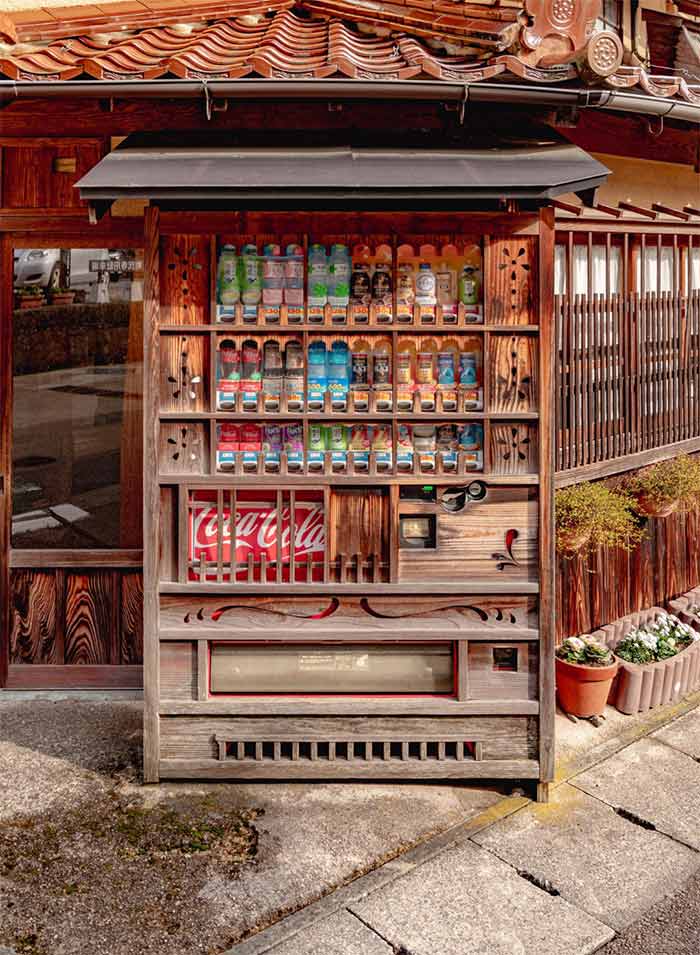
What I have always wanted
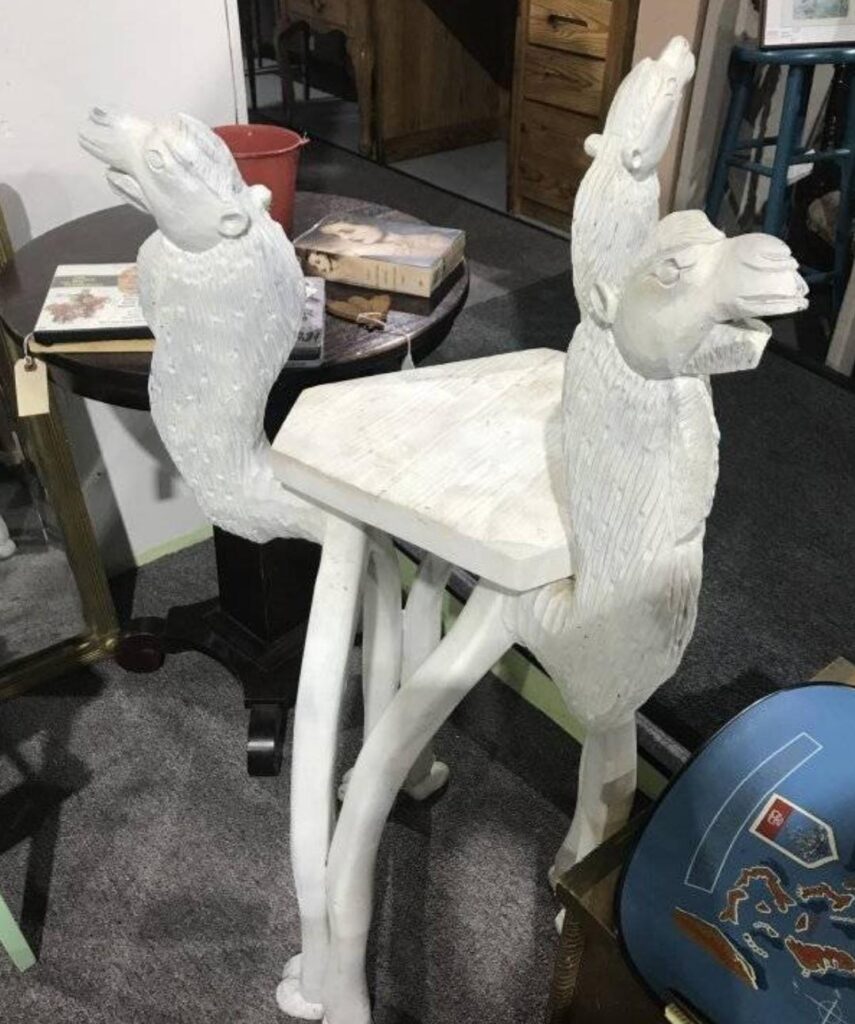
GoodFellas | East New York 1955
The gift that you have been waiting for…

This is CATASTROPHIC news for the U.S.!
https://youtu.be/Bzp4pJSZRaw
Xi presides over meeting on promoting coordinated development of Beijing-Tianjin-Hebei region
Key time points of the region’s development and an abridged translation of the official readout
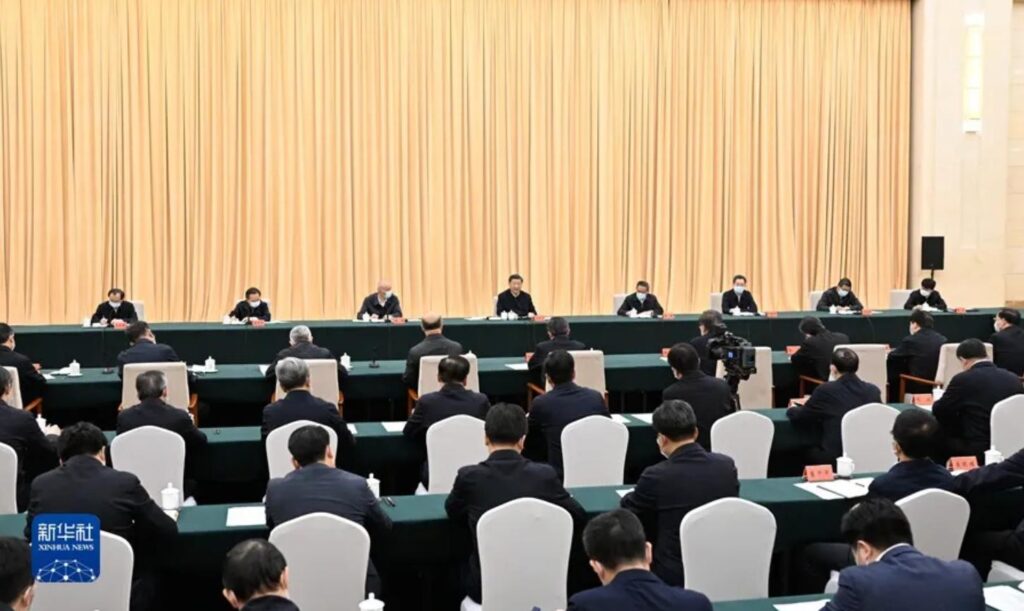
The Beijing-Tianjin-Hebei region includes three provincial-level regions, with key focuses on relieving Beijing of functions non-essential to its role as the national capital and coordinating development in one of the biggest city clusters in China.
By taking advantage of their geological closeness and economic significance, the three provincial-level regions are expected to produce a collective impact on the regional and national economy.
Today’s piece offers you a list of key time points of the development of the Beijing-Tianjin-Hebei region and an abridged translation of the official readout of Xi’s inspection.
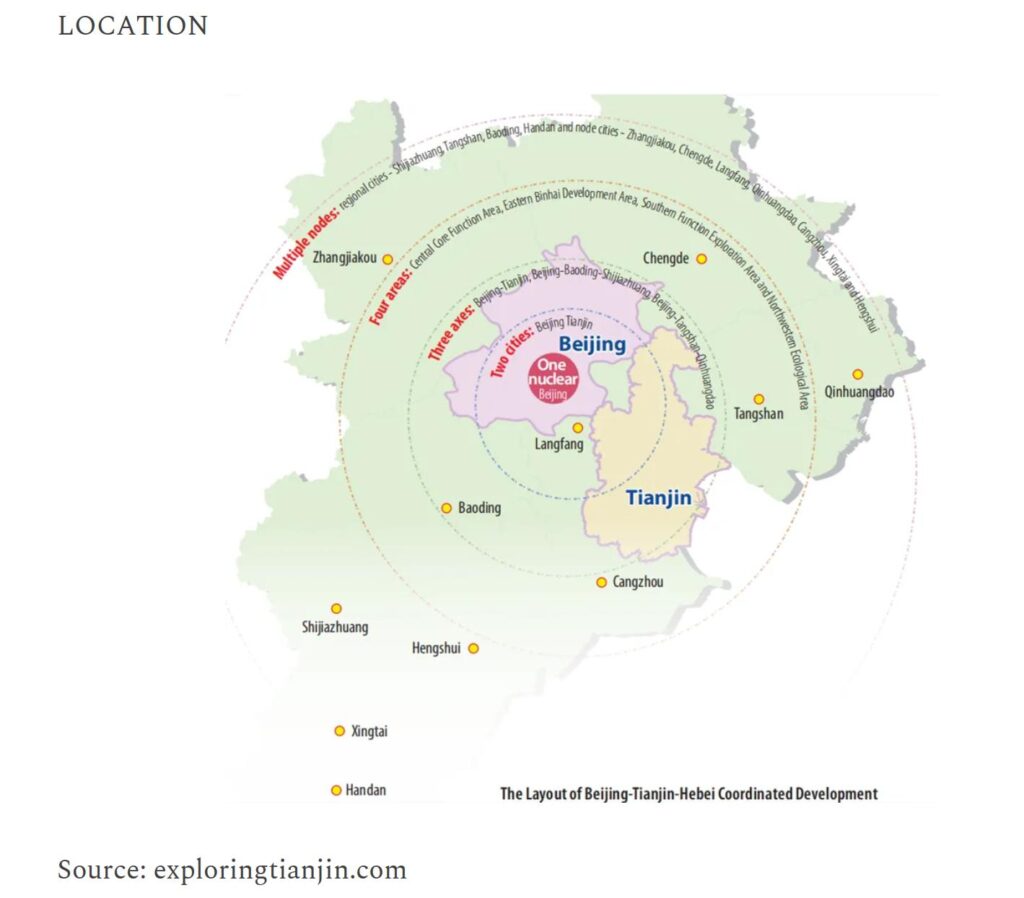
KEY TIME POINTS
- Xi’s history of visiting the region and speeches related to coordinated development can be traced back to May in 2013, when Xi visited Tianjin Municipality and called for composing “a tale of two cities” with the characteristics of a modern socialist country in the new era. In August of the same year, Xi called for coordinated development in Beijing-Tianjin-Hebei region.
- In 2014, a seminar concerning coordinated development was held in Beijing in which Xi said the synchronized development has “national significance,” and this strategy should be promoted to a national level. In 2015, the Political Bureau of the Communist Party of China (CPC) Central Committee released an outline of the development plan in this region, providing an important guideline for implementing the strategy.
- In February 2016, a plan for socioeconomic development during the period of the 13th Five Year Plan in the region was brought into effect, which is the first 13th Five Year plan for inter-regional development.
- In March, a report regarding the administrative sub-center of Beijing and relieving the city of non-essential functions was approved by the Political Bureau of the CPC Central Committee.
- In 2017, China announced its plan to construct the Xiong’an New Area, eying on becoming a significant part of the world-class Beijing-Tianjin-Hebei city cluster, taking over Beijing’s non-capital functions and providing a Chinese solution to “big city malaise,” such as overcrowding, pollution and traffic congestion.
- Xiong’an, together with the sub-center of Beijing — Beijing’s Tongzhou District, is expected to become one of the two areas for future development of the capital city, boosting the region to become one of the three economic engines of China, other than 珠三角 the Pearl River Delta and 长三角 The Yangtze River Delta Regions.
ABRIDGED TRANSLATION OF THE OFFICIAL READOUT
Xi Jinping: Make Beijing-Tianjin-Hebei region pioneer in pursuing Chinese modernization
中共中央总书记、国家主席、中央军委主席习近平近日在河北考察,主持召开深入推进京津冀协同发展座谈会并发表重要讲话。…… ,努力使京津冀成为中国式现代化建设的先行区、示范区。
President Xi Jinping has called for efforts to reach new heights in the coordinated development of the Beijing-Tianjin-Hebei region and to make it a pioneer and example in pursuing Chinese modernization. Xi, also general secretary of the Communist Party of China Central Committee and chairman of the Central Military Commission, made the remarks as he inspected Hebei Province and presided over a meeting on promoting the coordinated development of the Beijing-Tianjin-Hebei region.
5月11日至12日,习近平在河北省委书记倪岳峰、省长王正谱陪同下,先后来到沧州、石家庄等地,深入农村、港口、科研单位等,实地了解京津冀协同发展情况。
On Thursday and Friday, Xi went to the cities of Cangzhou and Shijiazhuang, where he visited the countryside and places including a port and a research institute.
11日上午,习近平来到沧州市,……,仔细察看小麦长势,并向正在田里劳作的种植户、农技专家询问旱碱麦产量、价格、品质、收益等。
On Thursday morning, Xi visited Cangzhou City, where he learned about the cultivation of crops that are tolerant of drought and high alkalinity at a wheat field.
11日下午,习近平来到黄骅港煤炭港区码头,…… 。习近平强调,河北区位优势独特,海运条件便利,要持续推进港口转型升级和资源整合,优化港口功能布局,……,在推动区域经济协调发展、建设现代化产业体系中发挥更大作用。黄骅港……,打造多功能、综合性、现代化大港。
Later in the day, Xi visited a coal port area of Huanghua Port. Xi noted the unique locational advantages and convenient shipping conditions of Hebei Province, underscoring the need to upgrade Hebei’s ports and optimize their functional layout to play a bigger role in promoting coordinated regional economic development and developing a modern industrial system. Xi urged the development of Huanghua Port into a modern hub port with multiple functions.
12日上午,习近平来到位于石家庄市的中国电科产业基础研究院考察调研,…… ,走进生产车间察看芯片生产流程。习近平指出,……,不断在关键核心技术上取得新突破。他勉励科技工作者再接再厉、勇攀科技高峰,不断攻克前沿技术,打造更多科技自立自强的大国重器。
On Friday morning, Xi visited a research institute of China Electronics Technology Group Corporation in Shijiazhuang City. He entered a workshop to observe the chip production process, stressing the need for new breakthroughs in core technologies in key fields. Xi encouraged researchers to achieve consistent progress in grasping cutting edge technologies and developing more technological and engineering equipment and projects of great significance.
习近平随后考察了石家庄市国际生物医药园规划展馆,…… 。习近平强调,…… 。要加强基础研究和科技创新能力建设,把生物医药产业发展的命脉牢牢掌握在我们自己手中。…… ,研发生产更多适合中国人生命基因传承和身体素质特点的“中国药”,……。
Later, Xi visited the planning exhibition hall of a biomedical industry park, where he emphasized the importance of strengthening basic research and scientific innovation capacity to keep the lifeline of the biomedical industry firmly in China’s own hands. To achieve this, he called for more research and development of medicines that fit into the genetic and physical characteristics of the Chinese population.
12日下午,习近平在石家庄市主持召开深入推进京津冀协同发展座谈会。
On Friday afternoon, Xi chaired a meeting on promoting the coordinated development of the Beijing-Tianjin-Hebei region.
听取大家发言后,习近平发表了重要讲话。…… 希望河北 …… 完整、准确、全面贯彻新发展理念,…… ,加快建设经济强省、美丽河北,…… 。
During the meeting, he called on Hebei to focus on the primary task of high-quality development and the strategic task of creating a new development pattern to accelerate building the province into an economic powerhouse with a sound environment.
习近平强调,党的十九大以来,按照党中央决策部署,…… ,京津冀协同发展取得新的显著成效,…… ,雄安新区建设取得重大阶段性成果,…… 。实践证明,党中央关于京津冀等重大区域发展战略是符合我国新时代高质量发展需要的,是推进中国式现代化建设的有效途径。
Since the 19th CPC National Congress in 2017, new and remarkable progress has been achieved in the coordinated development of the Beijing-Tianjin-Hebei region, especially in the Xiong’an New Area, Xi said. It has been proven that the CPC Central Committee’s major regional development strategies meet the need for the country’s high-quality development in the new era, he said, describing the strategies as effective channels for advancing Chinese modernization.
习近平指出,要牢牢牵住疏解北京非首都功能这个“牛鼻子”,…… 。要着力抓好标志性项目向外疏解,接续谋划第二批启动疏解的在京央企总部及二、三级子公司或创新业务板块等。…… 。要进一步从源头上严控北京非首都功能增量。
Xi called for solid and orderly efforts to relieve Beijing of functions non-essential to its role as the national capital, urging the planning for the relocation to Xiong’an of another batch of the headquarters of state-owned enterprises directly under the central government in Beijing as well as their subsidiary companies and units of innovation operation. Work should be done to restrain Beijing’s functions non-essential to its role as the national capital from increasing, Xi said.
习近平强调,要推动北京“新两翼”建设取得更大突破。
Xi called for more progress in developing both the Beijing municipal administrative center and Xiong’an to effectively rid Beijing of “big city malaise.”
习近平指出,京津冀 …… 拥有数量众多的一流院校和高端研究人才,创新基础扎实、…… ,在实现高水平科技自立自强中发挥示范带动作用。…… 。要强化企业的创新主体地位,形成一批有自主知识产权和国际竞争力的创新型领军企业。要巩固壮大实体经济根基,把集成电路、网络安全、生物医药、电力装备、安全应急装备等战略性新兴产业发展作为重中之重,着力打造世界级先进制造业集群。
Xi said the Beijing-Tianjin-Hebei region, with a number of first-rate colleges and universities and abundant high-end research talent, has a solid foundation of innovation. The region should play an exemplary role in achieving greater self-reliance and strength in science and technology, he said, calling for accelerated efforts to build Beijing into a major hub for independent and original innovation. Xi stressed the necessity of reinforcing the principal role of enterprises in innovation and cultivating a group of leading innovative enterprises with international competitiveness that hold independent intellectual property rights. Xi urged efforts to consolidate and enlarge the foundation of the real economy, stressing that strategic emerging industries such as integrated circuit, cyber security, biomedicine, electronic power equipment and emergency response equipment should be the first priority. He also called for efforts to build world-class advanced manufacturing industrial clusters.
习近平强调,推进京津冀协同发展,最终要体现到增进人民福祉、促进共同富裕上。…… ,不断提高人民群众的获得感、幸福感、安全感。…… 。要持续抓好北方防沙带等生态保护和修复重点工程建设,持续推进绿色生态屏障建设等重大生态工程。
The coordinated development in the Beijing-Tianjin-Hebei region should ultimately improve the people’s wellbeing and promote common prosperity, Xi said, adding that constant efforts should be made to enhance the people’s sense of fulfillment, happiness and security. Xi stressed the need to promote key ecological conservation and restoration projects such as the sand control belts in northern China and major ecological projects such as the building of ecological shields.
习近平指出,要继续加快推进交通等基础设施建设,深入推进区域内部协同。…… 。要把北京科技创新优势和天津先进制造研发优势结合起来,加强关键核心技术联合攻关,…… ,带动河北有条件的地区更好承接京津科技溢出效应和产业转移。……,打造全国对外开放高地。
Xi urged efforts to further accelerate the development of transportation and other infrastructure, as well as efforts to advance intra-regional coordination. Beijing’s edge in scientific and technological innovation should be combined with Tianjin’s strength in advanced manufacturing research and development, Xi said, calling for strengthening joint efforts to achieve breakthroughs in core technologies in key fields. Xi urged efforts to help eligible areas in Hebei absorb the scientific and technological spillovers from Beijing and Tianjin as well as the transfer of industries. He also called for building the Beijing-Tianjin-Hebei region into a national pacesetter in opening-up.
习近平强调,…… ,进一步增强各级党组织的政治功能和组织功能,为推进京津冀协同发展提供坚强保证。
Xi stressed the need to further enhance the political and organizational role of Party organizations at various levels to provide a strong guarantee for the coordinated development of the region.
Premier Li Qiang and Vice Premier Ding Xuexiang, both members of the Standing Committee of the Political Bureau of the CPC Central Committee, attended the meeting. Cai Qi, a member of the Standing Committee of the Political Bureau of the CPC Central Committee and director of the General Office of the CPC Central Committee, accompanied Xi in the inspection trip and attended the meeting.
In his remarks, Li Qiang urged efforts to advance the coordinated development of the Beijing-Tianjin-Hebei region more effectively and efficiently, focus on relieving Beijing of functions non-essential to its role as the national capital, and ensure notable results will be achieved in landmark projects in the process.
Ding Xuexiang called for persistent endeavor to prevent and control air pollution and bring the coordinated development of the Beijing-Tianjin-Hebei region to a new level.
The blind development of energy-intensive projects with high emissions and backward production capacity must be curbed, said Ding. He also urged redoubled efforts in developing new and clean energy and preventing and controlling pollution.
Ready for a fun night…

What happens when you lose your home at 72 in Amesbury, Massachusetts?
Thrift store find
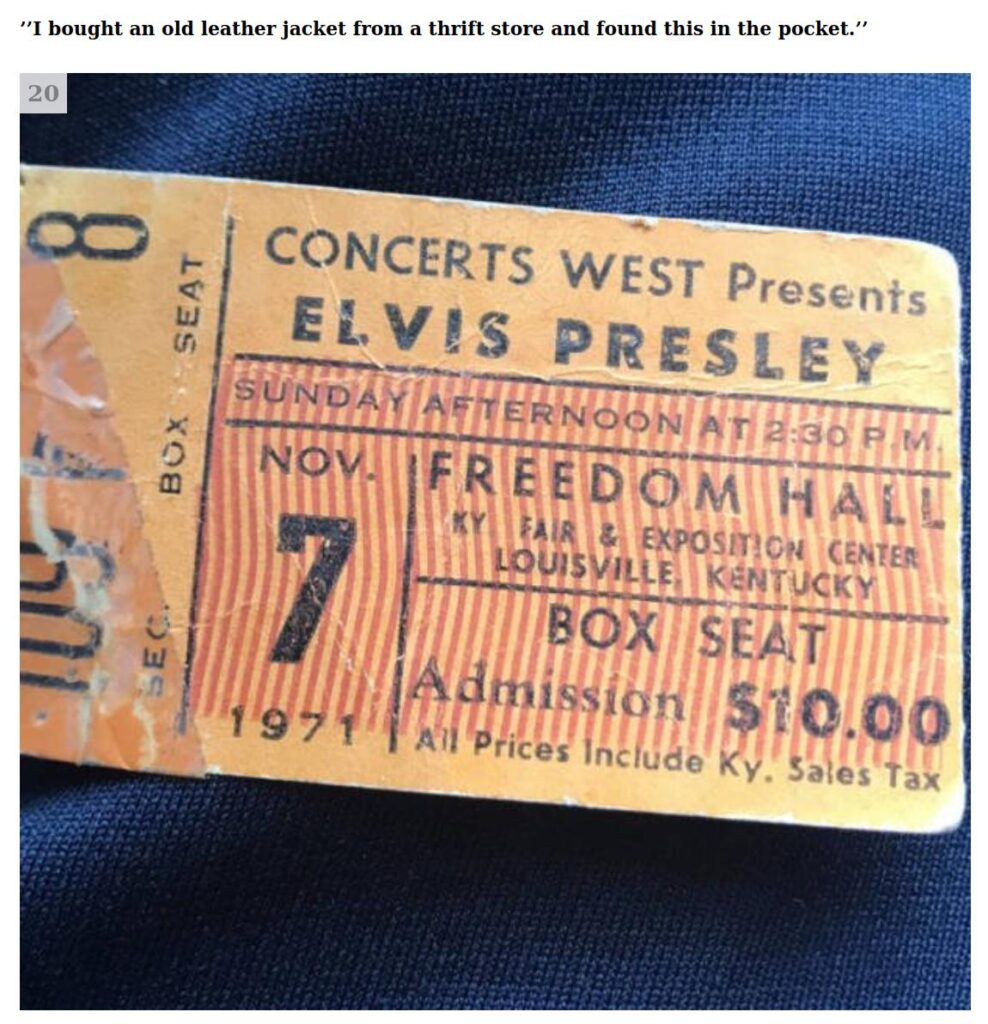
Meanwhile in Russia…

False Claims About Russia Continue To Cloud The ‘West’s’ Vision
The pro-Ukrainian Spectator states correctly that the sanctions on Russia have failed. But its reasoning is dubious:
The West embarked on its sanctions war with an exaggerated sense of its own influence around the world. As we have discovered, non-western countries lack the will to impose sanctions on either Russia or on Russian oligarchs. The results of the miscalculation are there for all to see. In April last year, the IMF forecast that the Russian economy would contract by 8.5 per cent in 2022 and by a further 2.3 per cent this year. As it turned out, GDP fell by just 2.1 per cent last year, and this year the IMF is forecasting a small rise of 0.7 per cent. And that is all in spite of the war in Ukraine going much more badly than many imagined it would in February of last year. The Russian economy has not been destroyed; it has merely been reconfigured, reorientated to look eastwards and southwards rather than westwards.
Yes, the ‘West’ had an “exaggerated sense of its own influence around the world”. But that is only a part of the problem. The ‘West’ still thinks it is superior to other countries even as at least some other countries have caught up with it and are, in parts, superior in the use of science and technology.
Moreover the ‘West’ thought that Russia was inferior to it. In 2015 the late Senator John McCain called it a “gas station masquerading as a country”:
“Look, Russia is a gas station masquerading as a country,” McCain said. “It’s kleptocracy. It’s corruption. It’s a nation that’s really only dependent upon oil and gas for their economy, and so economic sanctions are important.”
In the early 1990s Russia surely was down. But it wasn’t out. It had a heavy industry and everything it needed to feed it. It had well educated people and large scientific community. When McCain spoke, 25 years after Russia’s downfall, the country was largely back in the upper league.
Its per head production of steel, cement, energy and food was and is higher than in most ‘western’ countries. Those are the basics numbers one needs to judge an industrial country and its capabilities, not some dubious number like the Gross Domestic Product which includes ‘services’ of dubious value. (For example the share of health expenditure in the quite high U.S. GDP is 16.8% with a worse outcome for the general population than in less spending European countries.)
As it has now become clear even to the Spectator that the sanctions on Russia have failed one would hope that the ‘West’ would come to a more realistic view of itself and of Russia economic capabilities. Unfortunately that is not yet the case.
Witness Florida’s governor Ron DeSantis who in March 2023 basically repeated McCain’s false claim:
… DeSantis said of Putin. “And so, he’s basically a gas station with a bunch of nuclear weapons and one of the things we could be doing better is utilizing our own energy resources in the US.”
The ‘West’ will continue to underestimate Russia’s capability as long as such false claims are still believed. Only a realistic assessment and more respect for Russia’s capabilities can correct the mistake of waging and losing a proxy war against it.
Weird find in a thrift store

Walter White “Heisenberg” Having Dinner with Gustavo Gus Fring
American “news”
Is it no wonder that Americans are so very ignorant of the events of the world?

When the world is unkind…

Why Hitting the Debt Ceiling Would Be ‘Catastrophic’ for U.S. Economy
Breast of Chicken Oaxaca
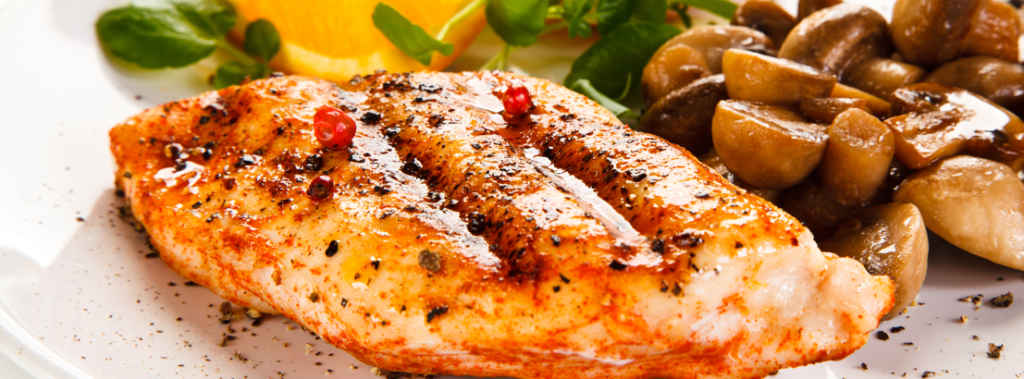
Ingredients
Chipotle Sauce
- 1/4 cup hot water
- 1/2 teaspoon chicken-flavored bouillon granules
- 4 canned chipotle chiles in adobo sauce
- 3/4 cup low-fat sour cream
- 1 tablespoon lime juice
Chicken
- 1 peeled avocado, cut into 6 wedges
- 1 tablespoon lime juice
- 6 (4 ounce) skinned, boned chicken breast halves
- 3/4 cup (3 ounces) shredded asadero or Monterey jack cheese
- 1/4 teaspoon salt
- 1/8 teaspoon white pepper
- 2 tablespoons all-purpose flour
- 3 large egg whites, lightly beaten
- 1 cup seasoned breadcrumbs
- 1 tablespoon vegetable oil
- Cooking spray
- 8 cups hot cooked linguine (about 1 pound uncooked pasta)
- 1/4 cup sliced ripe olives
- 2 tablespoons chopped parsley
Instructions
- Chipotle Sauce: Combine first 3 ingredients in a blender; process until smooth. Pour sauce into a bowl; stir in sour cream and 1 tablespoon juice.
- Chicken: Toss avocado with 1 tablespoon juice. Cut a horizontal slit through thickest portion of each breast half to form a pocket. Stuff 1 avocado slice and 2 tablespoons cheese into each pocket. Sprinkle chicken with salt and pepper, and dredge chicken in flour. Dip chicken in egg whites; dredge in breadcrumbs.
- Heat oil in a large nonstick skillet coated with cooking spray over medium-high heat. Add chicken; sauté 6 minutes on each side or until chicken is done.
- Toss pasta with olives and parsley.
- Place 1 1/3 cups pasta on each of 6 plates. Arrange chicken on pasta; top each serving with about 3 tablespoons chipotle sauce.
Show how classy you are

5 Reasons Being Indecisive Will Ruin Your Life
Will you take the job? Will you quit the job? Will you text her now or later? Will you break up with her? Will you move? Will you go out or stay in and work? Will you order sushi or thai?
Every single day we face a number of decisions. Each decision will affect you in some way. What you order for dinner will likely have only a small impact on your life. Maybe it will cause you an upset stomach, but that’s about as extreme as it can get.
Other decisions will have greater consequences. Deciding to quit your job, for instance, is sure to have more obvious, long-term effects on your life. But even though this fact can be scary, you cannot let it slow down your decision making process. Sure, there’s more information that must be gathered when it comes to changing careers versus ordering dinner, and the decision will likely take longer as a result. However, it’s important to realize that the dangers of prolonging the decision making process almost always outweigh the benefits of gathering more information.
Here are five reasons you should be making quicker, more concrete decisions:
1. Most decisions are not important
The pareto principle states that roughly 20 percent of causes generally account for 80 percent of the results. This means that roughly 20 percent of the decisions you face will account for 80 percent of the impact on your life. However, aside from obvious long-term decisions like buying a house or getting married, you won’t be able to accurately identify most of these choices. This means you shouldn’t waste time or energy on most decisions, because it will likely cost you more than the outcome affects your life.
For example, I often stress myself out about stupid shit like when I should text a girl or what I should write in said text when I’m single. Even after countless repetitions, I can let a routine decision like this affect my tranquility. I have to remind myself that in all likelihood, it doesn’t fucking matter.
2. A good decision today could be a bad decision tomorrow and vice-versa
This fact can be eye-opening. It’s extremely common to make a decision that grants you an immediately beneficial result, yet you come to regret it in the long-term. The opposite is equally true: it’s not rare to make a decision that seems like it was a terrible choice right after you make it, yet turns out to be a great choice a few weeks, months, or even years down the line.
A common example here is breaking up with a girl or quitting a job. It’s a decision that often causes you tremendous pain and suffering in the weeks and months that follow the decision. However, you usually bounce back with a fierce determination across all areas of your life that propels so much growth that you look back and realize it was actually a good thing overall.
The point is, because external circumstances and prolonged time can change how you view a particular outcome, you shouldn’t waste time worrying about making the “perfect” choice or regretting having made the “wrong” one. At the end of the day, there’s no such thing.
3. Making concrete decisions frees your mind
When there’s something on your mind, an issue or challenge you’re facing, the only way to get it off your mind is to make a decision that addresses the issue at hand. In my case, it doesn’t matter if it’s what book I’m going to write next or what time I should schedule a particular appointment, I can’t stop thinking about it until I’ve come to a firm decision.
The process I’ve recently adopted is keeping a notebook open on my desk. Whenever I catch myself repeatedly thinking about something to the point that it’s distracting me from the task at hand, I make a decision about it and write it down in the notebook. The act of writing it down helps my mind put the issue to rest—it makes me feel like I’ve made a firm decision that I won’t second guess.
4. People immediately identify and respect decision-makers
It doesn’t matter if it’s in a social setting, work environment, or with a girl you’re dating. When you consistently offer a firm decision to any situation that requires one, people recognize it. They unconsciously start to identify you as a leader. You’re aren’t afraid to make decisions and shoulder the responsibility that comes along with it.
With your friends this could mean choosing the bar or restaurant you’re going to check out on Friday night. At work it could mean advocating for a particular solution when everyone else in the room is sitting on the fence, fearful of committing one way or the other. With your girl this could mean always picking which activity you’ll pursue when the question arises.
5. Indecision spreads like wildfire
Decision making is a habit like any other. If you’re at dinner with someone who can’t even choose what they’d like to drink off the menu, chances are they can’t make any other decisions without their stress levels shooting through the roof either. What this means for you is if you don’t start practicing making quick, firm decisions you’ll be practicing not being able to make decisions by default. There’s no middle ground. When you’re at dinner, make a quick choice and forget about it. When you’re with your boys, voice your opinion about what you think you should do. By constantly making small decisions quickly, you’ll be able to face the tougher ones with a firm resolve as well.
Signs of the times

The Future After De-Dollarization
Meanwhile in China

What’s It Like To Be Gay And In Prison?
It depends on the man himself.
In CCA there was an openly gay Hispanic fellow, who I don’t believe spoke any English. The Hispanic guys doted on him. He was treated by a number of men the way you might expect they would treat a girlfriend. I saw his admirers bring him little gifts, candy purchased on commissary, the milk from their breakfast… They would save him a seat close to the TV, and made sure his laundry was tended to.
The Hispanic fellow liked to stand on the upstairs balcony where he had a direct view into the showers… Most of us thought it was funny. He seemed to think nobody noticed. There was a female guard, a petite brunette in her early twenties who did the same thing. There were a few guys who liked an audience and would make sure the merchandise was on display. I think the same guys performed for the woman and the fellow.
In federal prison we had Gay Dave, a tiny man who looked like he could’ve been a model if he could feign a little more of the machismo that magazines seem to like. He loved the attention he got and seemed to play it up. I remember saying something to him about the prison-issue blankets. His reply, in a lilting voice was, “Now, I forget… Sheet or blanket, which one goes on top?” I walked away thinking, “Can he really be that dumb?”
Oh. Duh. I got it later. I was the dumb one.
Big Gay Ken was completely different (bet you thought I was going to say Big Gay Al). Extremely bright, Ken had the most caustic wit I’ve ever encountered. He was large featured, loud, and extremely heavy. His wit was used defensively against everyone, even those he might call friends. It was entertaining in short bursts, but draining over the long haul. The dirty white boys loved to hate Ken. I suspect they were jealous of how he could verbally shrink anybody, and was never afraid to. They called him The Kangaroo because his stomach, devoid of any muscle, drooped down between his legs while he sat (and he sat a lot) . It seemed to remind them of a marsupial’s pouch. Ken, bright as he was, never got it. “Kangaroo? What the fuck is THAT supposed to mean?!” he’d shout for the entire unit to hear. I say shout, but that was Ken’s normal conversational level.
We had a gay doctor. A wonderful man who was so much fun to listen to… He often taught health classes and had everyone’s respect as far as I could tell. I’d often see men come to ask him his opinion on their health concerns at chow hall. He was always smiling and helpful. He’d make sure you knew what the medical department was *supposed* to do for you.
Finally there was “Pocahontas.” She was feminine in every way that she could be, save one. Every gesture, from her walk, to the way she moved her head were those of a woman. She wore little bits of jewelry made in prison, and paid far more attention to her clothes than most. She grew her hair out as long as she could, but male pattern baldness doesn’t care how comfortable you are in your body and it will thin whatever you have. Almost everyone gave Pocahontas a wide berth.
The openly gay guys were just people like everyone else, some with more virtues than faults, some the other way around. Their individual experiences were pretty much what their personalities created.
– Jim Christmas, Four years behind bars for another man’s crime.
Paulie Walnuts shoelaces rant
Japanese uniqueness

Viking Penny
In 1957, a wannabe amateur archaeologist hiking through rural New England found a small coin at what was thought to be an ancient Native American site.
The location, at Naskeag Point in the state of Maine, was originally believed to be a sacred Indian setup. But when the amateur sleuth turned the silver coin into a group of experts, everything we thought we knew about the New World was flipped on its head.
After studying the coin in great detail, the experts realized it was an 11th-century Norwegian coin.
It must have been carried over to North America by Viking sailors at some point in the 1000s or immediately after that. Immediately, it became one of the earliest examples of currency ever found in the Americas. And without question, it was the earliest known piece of Scandinavian silver that was found to be deposited on American shores.
By the mid-1970s, new teams of archaeologists had determined the coin dated back to a period between 1065 and 1080.
That made sense, as the Native American site where it was found was itself thought to have been in use around 1100. But how did the coin get to North America? And how long were Norse travelers here to have handed it over as a gift or trade item to natives? The issue is further complicated because the so-called “Maine penny” is the only 11th-century Norse coin ever found in America.
With no other examples to speak of, scientists and skeptics alike wonder if it isn’t some kind of hoax. But it appears to have been altered in a way that may tell its true tale:
A small mark on the silver coin indicates it was likely used as a pendant.
Rather than functioning as currency, it could have been a one-off gift given by Norse visitors to new world natives. That would seem to make some sense—but archaeologists and historians simply don’t know for sure.
A perfect childs toy
Another thrift store gem.

Turtle Tunnels
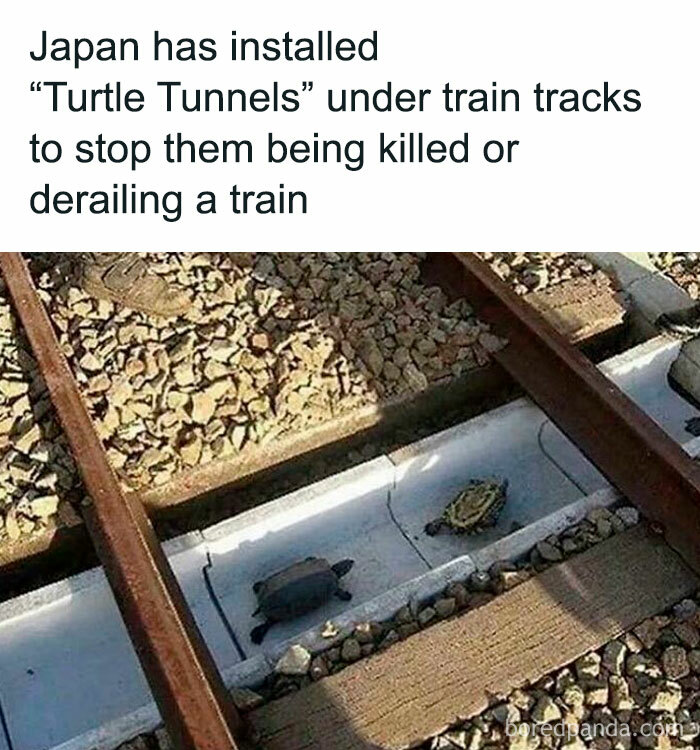
Miami Circle
Many unsolved ancient mysteries involve stones. There’s a reason for that: stone—unlike wood, mud, or anything else—withstands the tests of centuries of time. That we even know of these mysterious sites still in existence today is because their stone creations have been maintained through eras. The stone circle of Miami, Florida, is precisely one of those sites.
In 1998, South Beach developers broke ground on what was supposed to be a new condo complex. They wanted to demolish a few blocks of old housing and put up a line of sleek skyscrapers. As they were tearing down to build back up, they started digging deep down into the ground. And there, they found something fascinating: a circle of 24 large holes filled with heavy limestone tablets. By law, the developers called in archaeologists to uncover even more.
The experts began digging down even further (and much more carefully) and soon uncovered an entire setup. The stones were placed in a perfect circle that had a 38-foot (11.6-meter) diameter. The area was also covered in long-buried artifacts like animal bones, shark teeth, and even primitive ax heads made from basalt rocks. Archaeologists tried to carbon-date what they could with the sediment and ground surrounding the discovery. In doing so, they estimated the “Miami Circle” to be roughly 2,000 years old.
Beyond that, there isn’t very much known about the circle itself or why it was put there. Archeologists believe the stones were placed by a group of people known as the Tequesta. This mysterious tribe survived as late as the early 18th century, but they were a mystery to many even then.
In the 1500s, Spanish explorers came across them and described the Tequesta as bloodthirsty, hostile, and nomadic. Coming from the Spanish, of all people, those first two descriptors have a certain dark irony to them. But it’s the third one that puzzles archaeologists the most.
The Tequesta really were nomadic, living in small, constantly roving bands that hid out all across the Everglades. Not much is known of their existence, and even less is known of the Miami Circle. But the site still sits smack-dab in the middle of the city today, and researchers are still digging up finds and studying artifacts from it. Maybe one day, they hope, more will be unearthed (literally) about who the Tequesta were and what they were up to with that giant circle.



